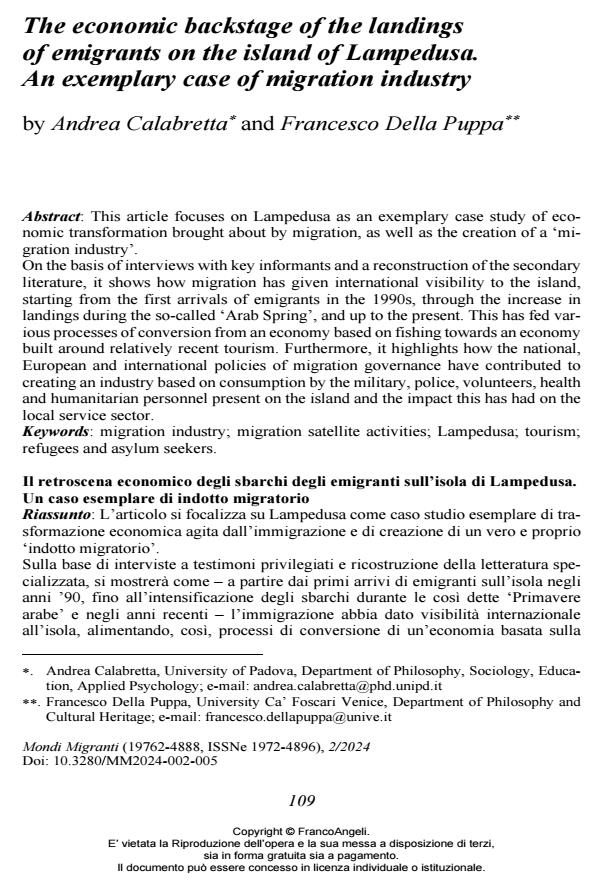The economic backstage of the landings of emigrants on the island of Lampedusa. An exemplary case of migration industry
Titolo Rivista MONDI MIGRANTI
Autori/Curatori Andrea Calabretta, Francesco Della Puppa
Anno di pubblicazione 2024 Fascicolo 2024/2
Lingua Inglese Numero pagine 26 P. 109-134 Dimensione file 252 KB
DOI 10.3280/MM2024-002005
Il DOI è il codice a barre della proprietà intellettuale: per saperne di più
clicca qui
Qui sotto puoi vedere in anteprima la prima pagina di questo articolo.
Se questo articolo ti interessa, lo puoi acquistare (e scaricare in formato pdf) seguendo le facili indicazioni per acquistare il download credit. Acquista Download Credits per scaricare questo Articolo in formato PDF

FrancoAngeli è membro della Publishers International Linking Association, Inc (PILA)associazione indipendente e non profit per facilitare (attraverso i servizi tecnologici implementati da CrossRef.org) l’accesso degli studiosi ai contenuti digitali nelle pubblicazioni professionali e scientifiche
Andrea Calabretta, Francesco Della Puppa, The economic backstage of the landings of emigrants on the island of Lampedusa. An exemplary case of migration industry in "MONDI MIGRANTI" 2/2024, pp 109-134, DOI: 10.3280/MM2024-002005